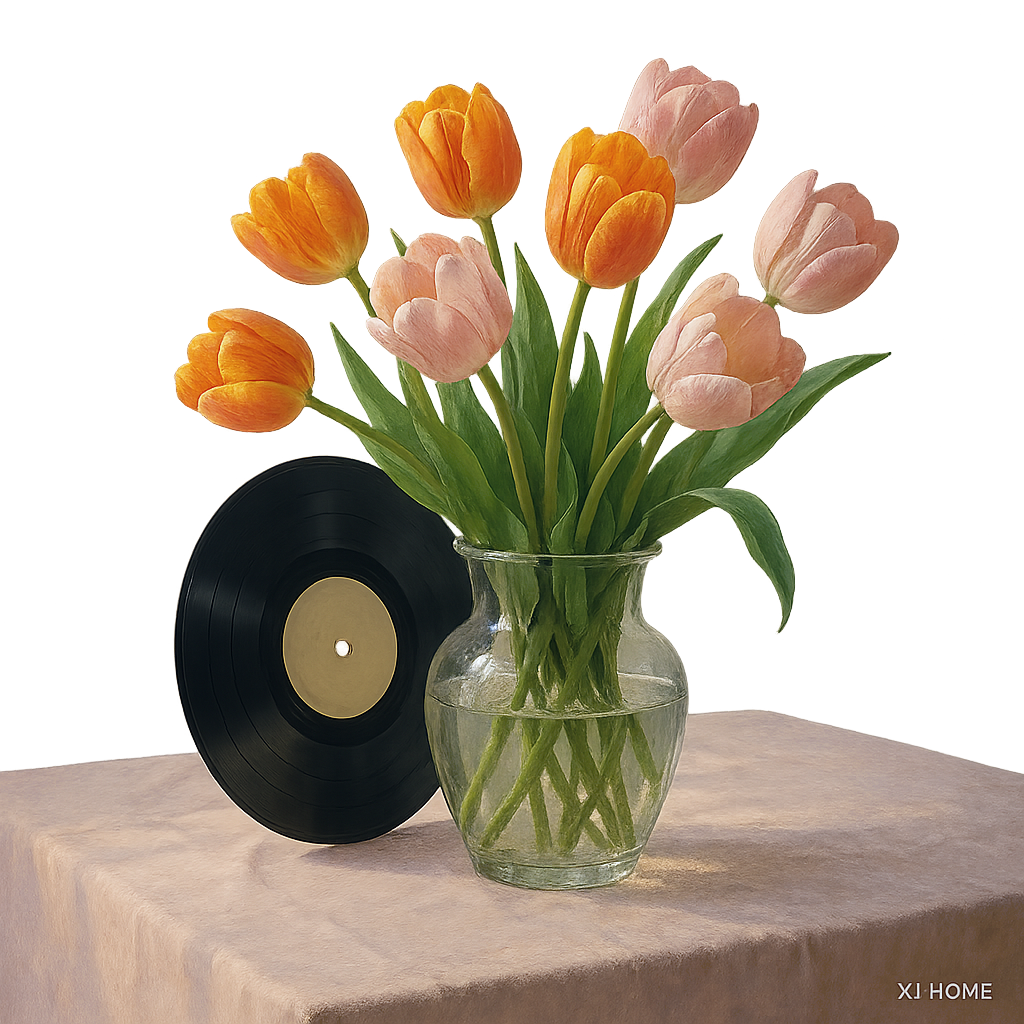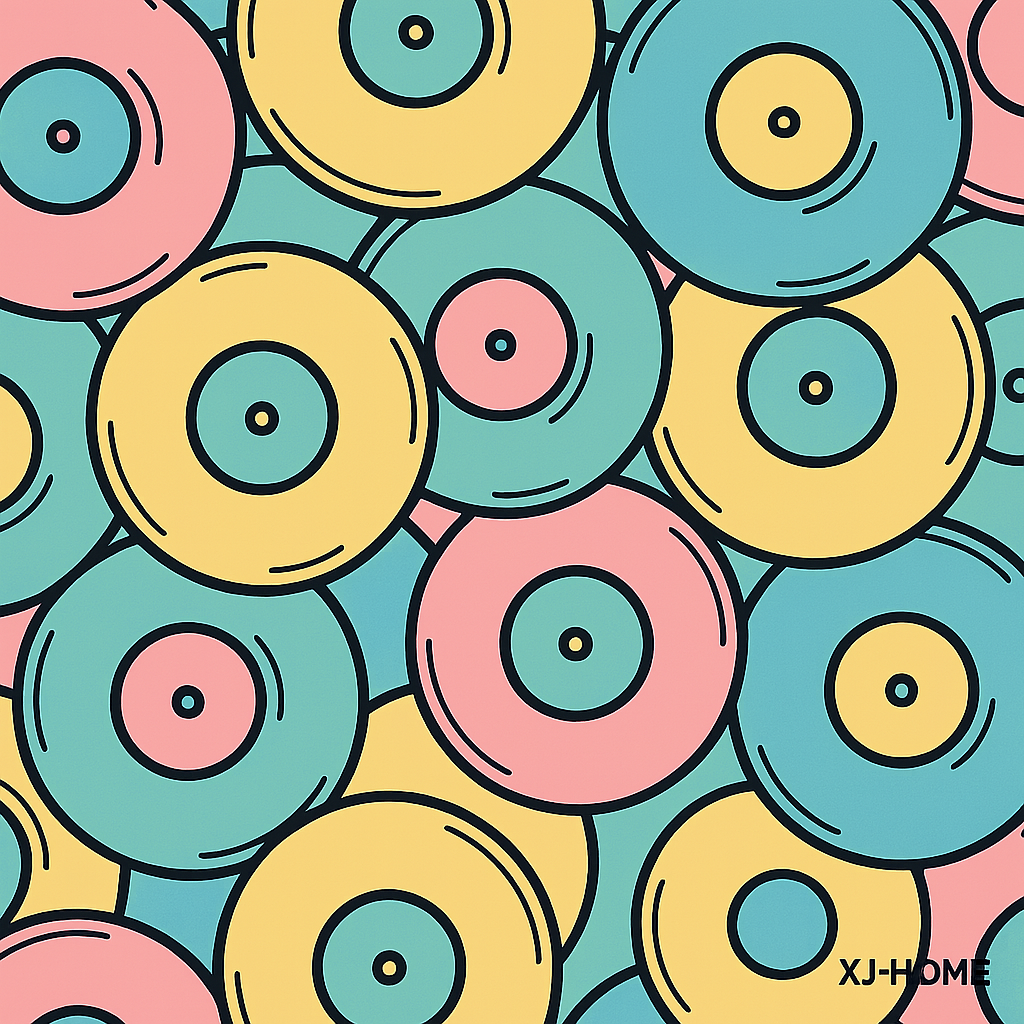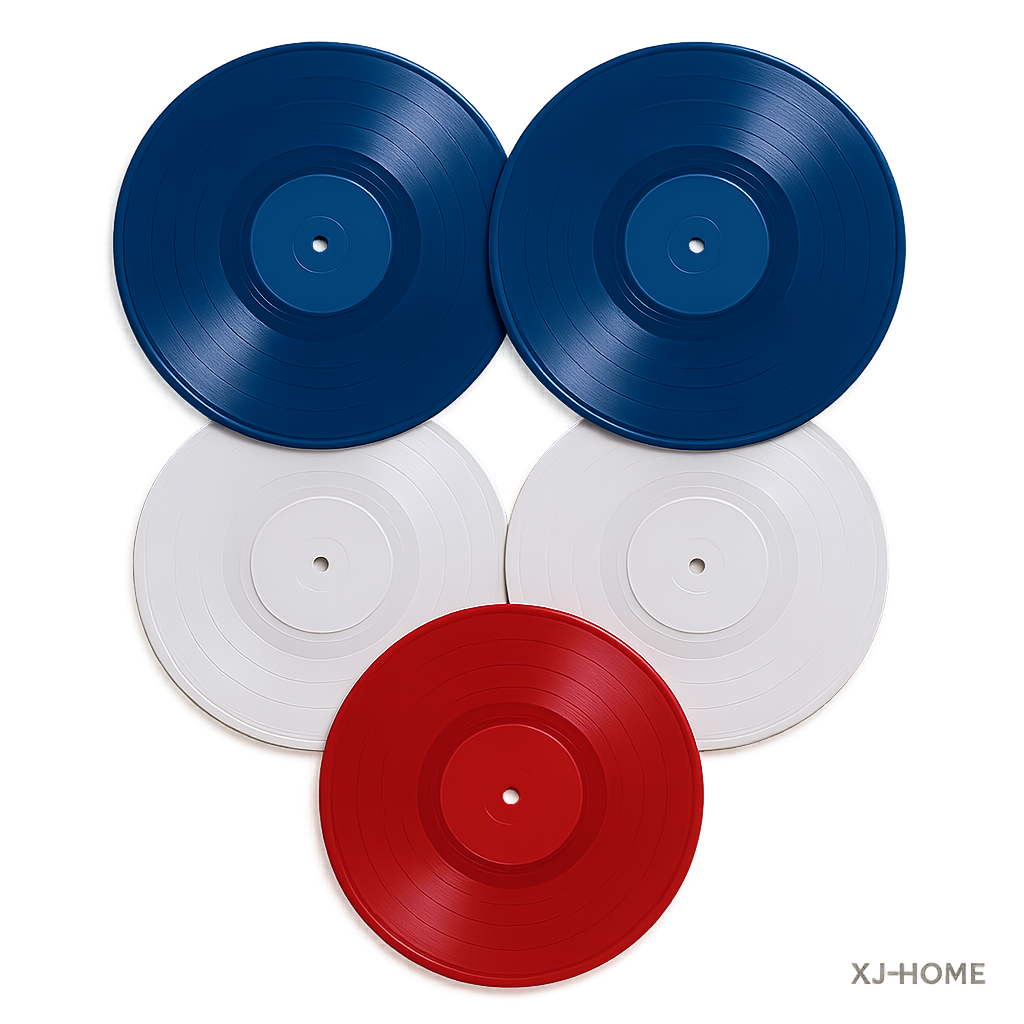In an era of instant gratification and mass-produced everything, there's a profound satisfaction in creating something with your own hands. For the vinyl enthusiast, this desire often extends beyond just curating a record collection; it can lead to the very foundation of your analog sanctuary: the turntable stand. Why settle for a generic piece of furniture when you can build something that's not only perfectly suited to your needs but also an extension of your passion?
Forget the wobbly, resonant compromises often found in flat-pack hell or the sometimes unjustifiable price tags of "audiophile-grade" racks that seem to defy basic physics. Building your own stand is an opportunity to connect with the physicality of your hobby on a new level. It's a chance to imbue your listening space with personal intention and, yes, even to potentially improve the sonic performance of your beloved turntable. This isn't just about holding up a record player; it's about creating a dedicated home for the heart of your analog system.
Part 1: The Soul of the Stand - First Principles for the Discerning Builder
Before you even think about wood types or screw sizes, let's address the core purpose of a turntable stand. It's more than just a pretty platform. Its primary roles are to provide a stable, level surface and to manage unwanted vibrations – those insidious gremlins that can muddy your sound.
Isolation, Damping, and the Dance of Resonance:
This is where much audiophile mythos resides, but the science is fairly straightforward. Your turntable's stylus is an incredibly sensitive instrument, designed to read microscopic variations in a vinyl groove. External vibrations (from footsteps, speakers, etc.) and even internal vibrations (from the turntable's motor) can interfere with this delicate process, leading to a loss of detail, smeared imaging, or audible feedback (especially at higher volumes).
-
Isolation: This is about preventing external vibrations from reaching the turntable. Think of it as creating a moat around your castle. Heavy, dense materials can help, as can specialized isolation feet or platforms.
-
Damping: This is about dissipating vibrational energy that does reach the stand or is generated by the turntable itself. Different materials have different damping properties. Some will "ring" like a bell (bad), while others will absorb and dissipate energy quickly (good).
-
Mass-Loading: Generally, a heavier stand is less susceptible to being excited by vibrations. However, sheer mass isn't a silver bullet if the material itself has poor damping qualities or if the design allows it to resonate at problematic frequencies.
The goal is a stand that is acoustically "dead" or inert, neither adding its own sonic signature nor allowing external interference to corrupt the signal. For a deeper dive into how vibrations can affect audio equipment, the principles discussed in resources concerning loudspeaker cabinet design are surprisingly relevant. While focused on speakers, this article on vibration and damping from Audioholics offers excellent foundational knowledge on how materials behave.
Material Truths for the Audiophile Ear (and Eye):
The choice of materials is crucial, affecting stability, resonance control, aesthetics, and, of course, budget.
-
Solid Hardwoods (Oak, Maple, Walnut): Beautiful, strong, and can be very stable. Dense hardwoods are generally good at damping, though this varies by species. Can be expensive and require more skill to work with.
-
High-Quality Plywoods (Baltic Birch, ApplePly): Excellent choice. Multiple layers create a very stiff, well-damped, and stable material. Less prone to warping than solid wood. Takes finishes well.
-
MDF (Medium Density Fiberboard): Often touted for its damping qualities and ease of machining. It's dense and homogenous. However, it's heavy, not structurally the strongest (screws can strip), and susceptible to water damage. Its "deadness" can be a plus, but some find it can lead to a "lifeless" sound if not implemented carefully – a point of contention in audiophile circles.
-
Metals (Steel, Aluminum): Offer excellent rigidity and strength. Steel is very dense and can be filled with sand or other materials for further damping. Aluminum is lighter and can be machined into sleek designs. Both can ring if not properly damped or designed, often requiring integration with other materials (e.g., wood shelves on a steel frame).
-
Acrylic, Stone, Composites: These can offer unique aesthetic and acoustic properties but often come with a higher price tag and more complex fabrication needs. Granite or slate can be incredibly stable and inert, but also very heavy.
A word of caution: be wary of "exotic" material claims that promise sonic nirvana without robust explanation. Human nature loves a good story, and the audiophile world isn't immune to placebo. Sometimes, good old-fashioned Baltic Birch, thoughtfully employed, will outperform a far more esoteric and expensive solution.
Ergonomics & Aesthetics: The Stand in Your Life
A stand must be functional and visually harmonious with your space.
-
Height: Consider your comfort. Will you be standing or sitting when changing records? The turntable should be at a height that minimizes strain.
-
Record Storage: Integrating storage for your most played records, or even a larger collection, is a practical win.
-
Component Integration: Will the stand also house your amplifier, phono preamp, or other gear? Plan accordingly for size, ventilation, and cable management.
-
Visual Harmony: Your stand is a piece of furniture. It should complement your room's décor and the aesthetic of your audio equipment. This is where your personal style truly comes into play. At XJ-HOME, we believe that the environment in which you experience music is integral to the experience itself. A thoughtfully designed and built stand contributes to this holistic appreciation.
Part 2: Blueprinting Your Build - Design & Planning
With first principles in mind, it's time to translate your needs and desires into a tangible plan.
Know Thyself (and Thy Gear):
-
System Specs: What are the dimensions and weight of your turntable? Do you have a heavy platter or a massive plinth?
-
Component Army: List all other equipment the stand needs to accommodate.
-
Vinyl Hoard: How much record storage do you realistically need integrated?
-
Skill Level: Be honest. Are you a seasoned woodworker, or is this your first foray beyond assembling IKEA furniture? Designs can range from incredibly simple (a few pieces of well-chosen, finished wood with basic joinery) to complex multi-tiered units.
Design Inspiration – Common Archetypes:
-
Minimalist Platform: A single, robust shelf or plinth, often wall-mounted or on sturdy legs. Focuses on simplicity and isolation.
-
Multi-Tiered Rack: The classic hi-fi rack. Allows for multiple components. Design considerations include shelf spacing and overall stability.
-
Console Style: A lower, wider unit, often incorporating significant record storage. Can be a beautiful statement piece.
-
Wall-Mounted Shelf: Excellent for isolation from floor-borne vibrations, especially in rooms with bouncy wooden floors. Requires secure mounting to wall studs.
Sketch It Out:
Even a rough sketch on a napkin can clarify your ideas. For more complex designs, free software like SketchUp can be invaluable for visualizing, getting dimensions right, and even creating a cut list.
The All-Important Bill of Materials (BOM) & Budget:
List every single component: wood, screws, glue, feet, finishing supplies. Research costs. This is where you decide where to invest. Perhaps splurge on high-quality plywood for the main shelves but use simpler legs. Or invest in premium isolation feet.
Part 3: The Build - From Raw Material to Reality (A General Guide)
This guide offers general principles, as specific steps will vary wildly with your chosen design. Safety first! Always use appropriate safety gear (eye protection, hearing protection, dust mask) and understand how to use your tools safely.
Essential Tools:
-
Beginner: Good quality hand saw (or circular saw if comfortable), drill, clamps, measuring tape, square, level, sandpaper.
-
Intermediate/Advanced: Add a router, random orbit sander, pocket hole jig, table saw, miter saw for more precision and complex joinery.
Joinery – Connecting the Pieces:
-
Simple & Strong: Glue and screws are a perfectly viable starting point, especially with good quality plywood. Pocket holes offer a strong, hidden way to join pieces.
-
More Advanced: Dowels, biscuits, mortise and tenon, or dovetails offer increased strength and a more traditional craftsman aesthetic but require more skill and specialized tools.
Assembly Tips:
-
Measure Twice, Cut Once: The oldest rule in the book for a reason.
-
Work on a Level Surface: Ensures your stand ends up square and stable.
-
Dry Fit: Assemble everything without glue or permanent fixings first to ensure all pieces fit correctly.
-
Clamping is Key: Proper clamping ensures strong glue joints.
Finishing Touches – The Glow-Up:
-
Sanding: Crucial for a smooth, professional look and feel. Start with coarser grits and move to finer grits.
-
Stain, Paint, Oil: Your choice will define the final look. Oil finishes (like Tung or Danish oil) can bring out the natural beauty of wood. Paint offers endless color options. Stains can enhance or change wood color before a protective topcoat.
-
Topcoat: Polyurethane (water-based or oil-based) or lacquer will protect the wood from spills and wear.
Cable Management – The Unsung Hero:
Plan for this! Drill holes in back panels or shelves, use Velcro ties, or incorporate channels to keep wires tidy. A clean setup looks better and is easier to manage.
Part 4: The XJ-HOME Ethos - Crafting Your Audio Sanctuary
Building your own turntable stand is more than a practical exercise; it's an act of dedication to your passion. This deep engagement with the components of your audio system, this desire for optimization and personalization, resonates with the core philosophy we champion at XJ-HOME. We believe that true audiophilia is about a conscious, considered approach to sound and the environment in which it's experienced.
While we at xenonjade.com focus on curating exceptional audio experiences and insights, we recognize and celebrate the spirit of the audiophile who takes an active role in shaping their own listening world. The care, research, and effort you pour into building a stand mirrors the dedication we believe should go into every aspect of high-fidelity audio. Your DIY stand becomes an integral part of your system, a testament to your commitment to quality.
Conclusion: More Than a Stand, It's Your Statement
The journey of building your own record player stand will reward you with more than just a piece of furniture. You'll gain a deeper understanding of materials, design, and perhaps even the subtle interplay of physics that affects your music. You'll have a piece that is uniquely yours, tailored to your system and your aesthetic. And every time you cue up a record, you'll feel the satisfaction of knowing you built the very foundation it rests upon.
So, embrace the challenge. Do your research. Plan carefully. And enjoy the process of creating something truly special. For further inspiration, camaraderie, and a wealth of DIY audio knowledge, communities like diyaudio.com are invaluable resources, full of fellow enthusiasts who have trodden this path.
Happy building, and even happier listening!





Leave a comment
All comments are moderated before being published.
This site is protected by hCaptcha and the hCaptcha Privacy Policy and Terms of Service apply.